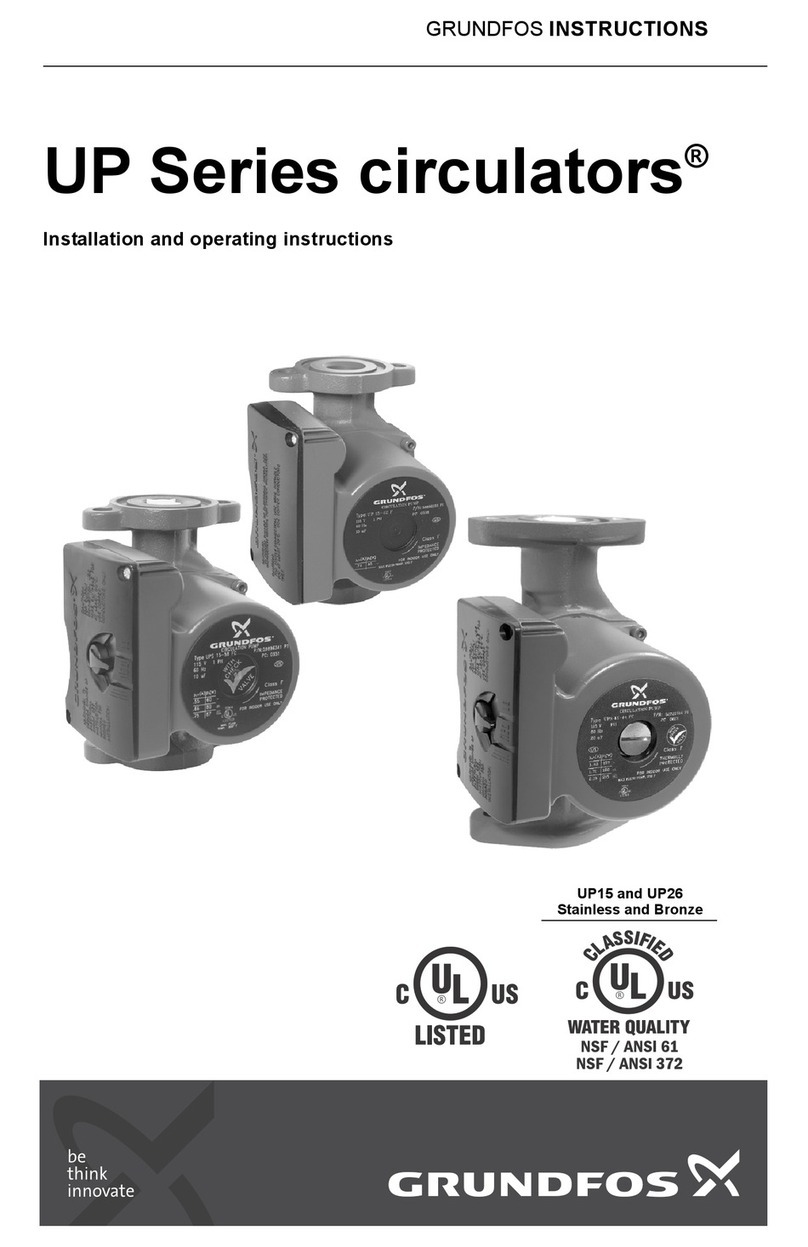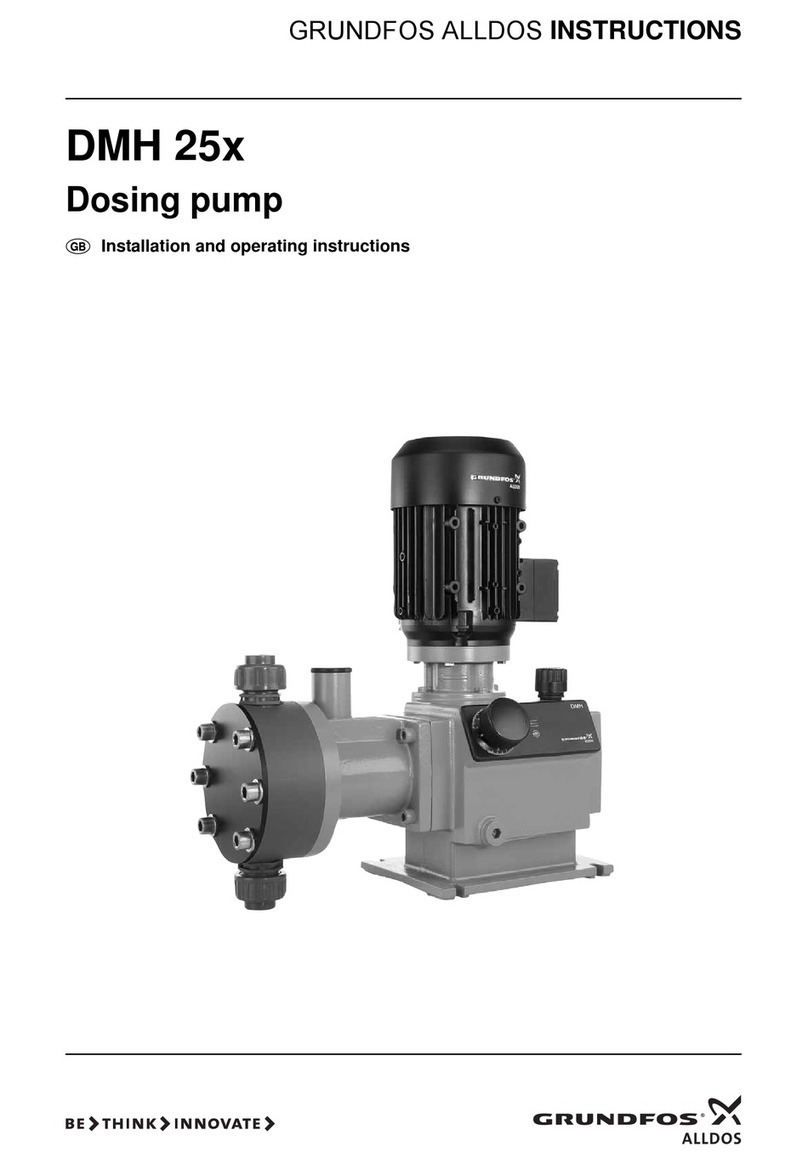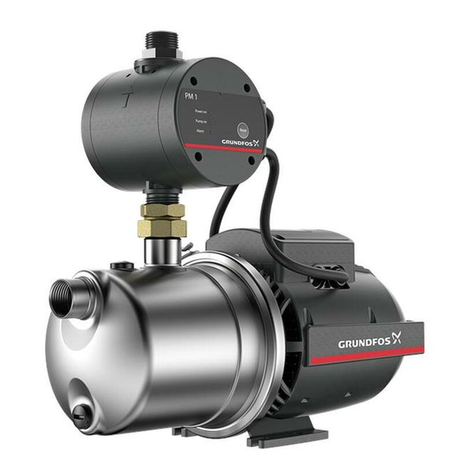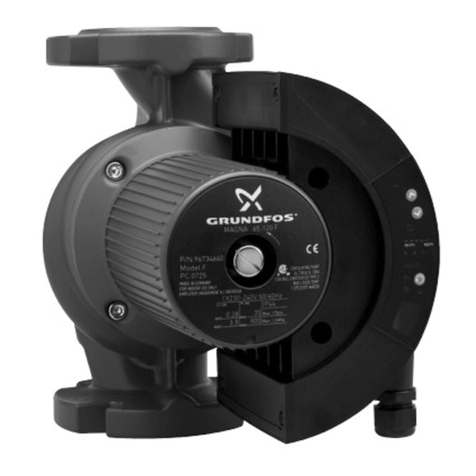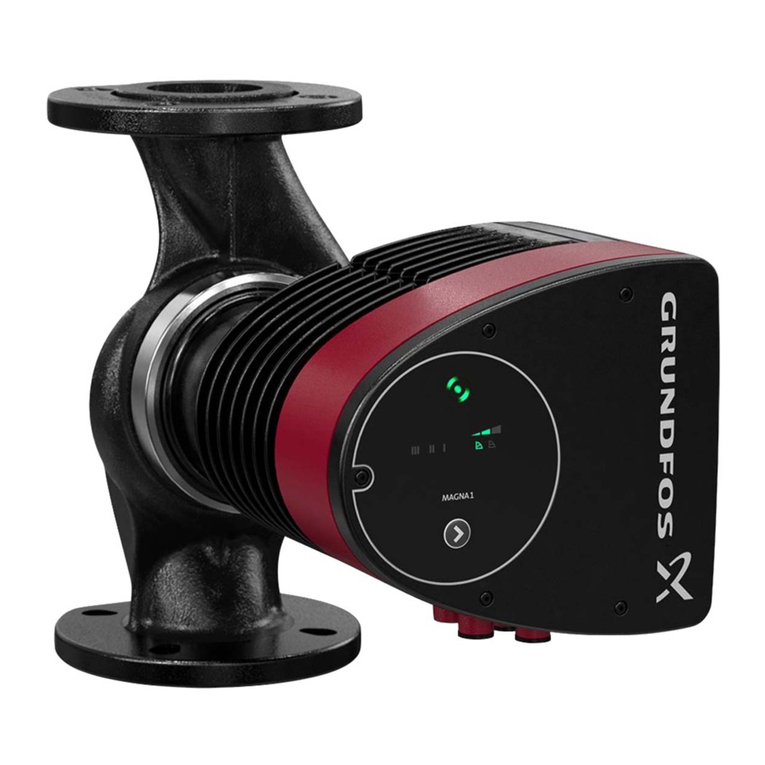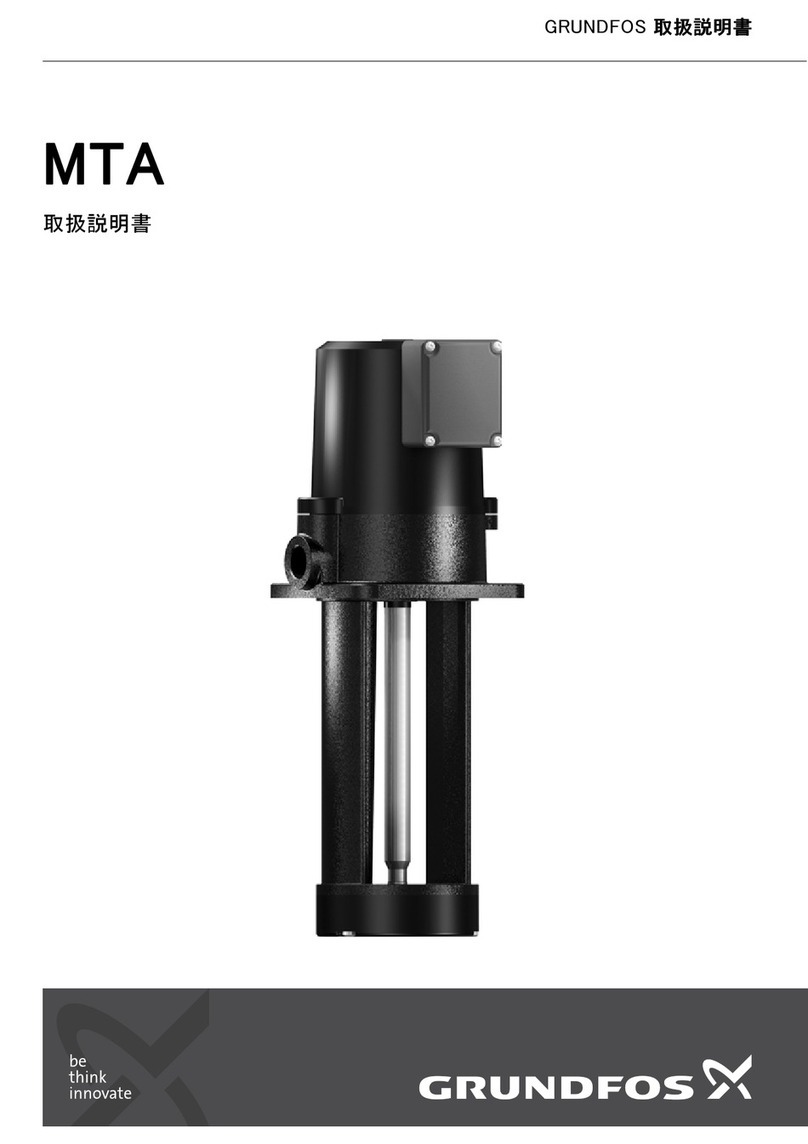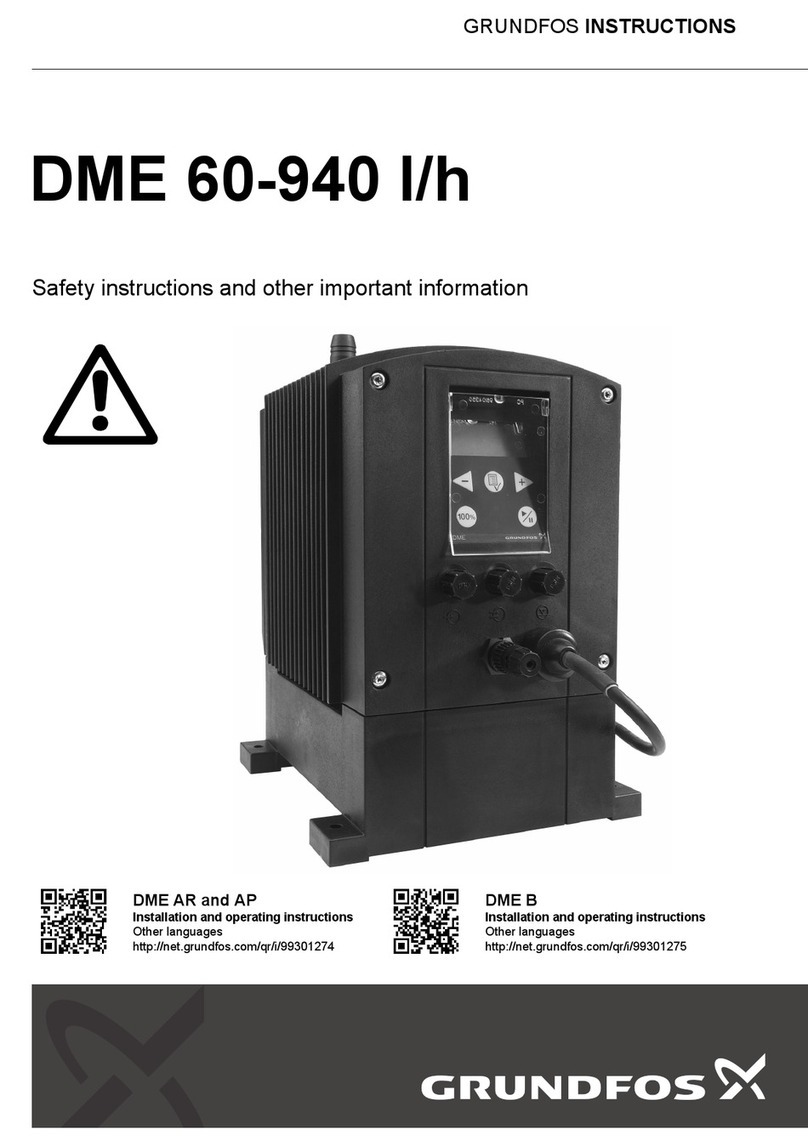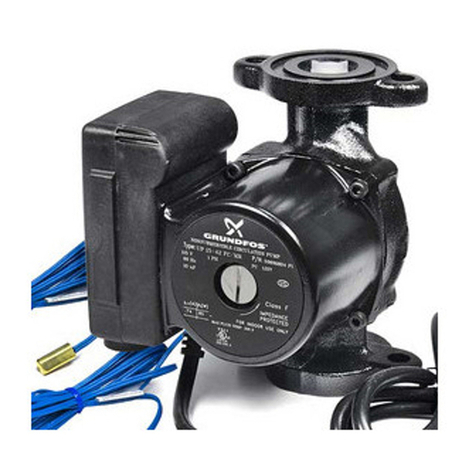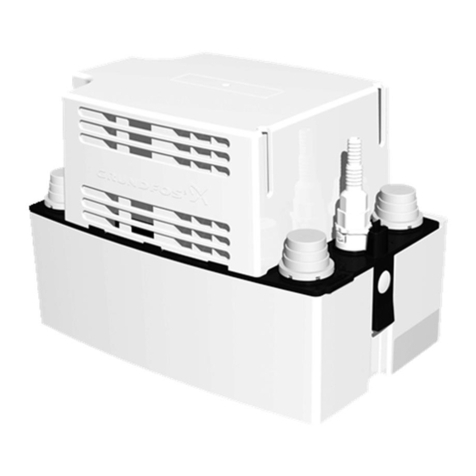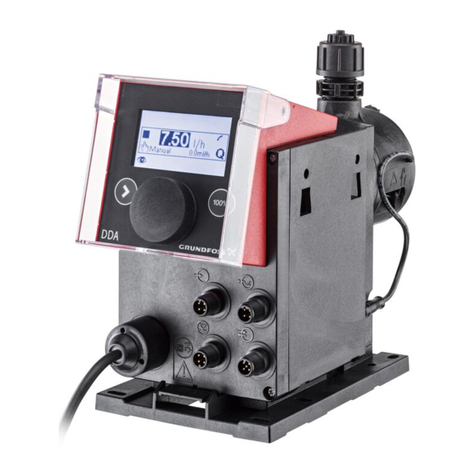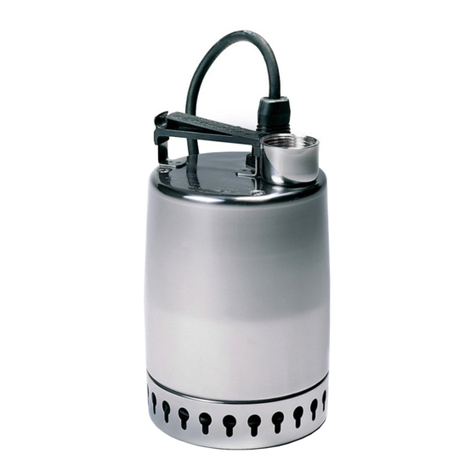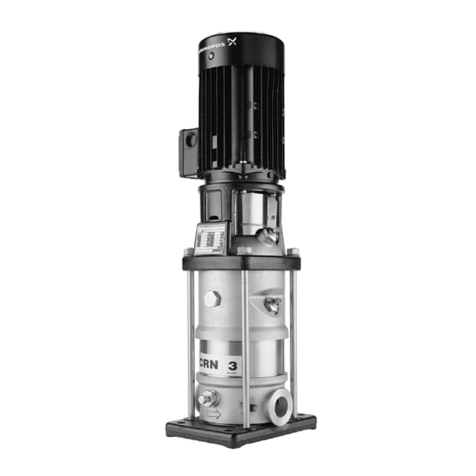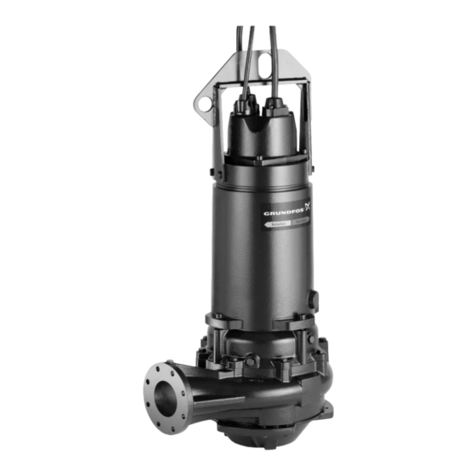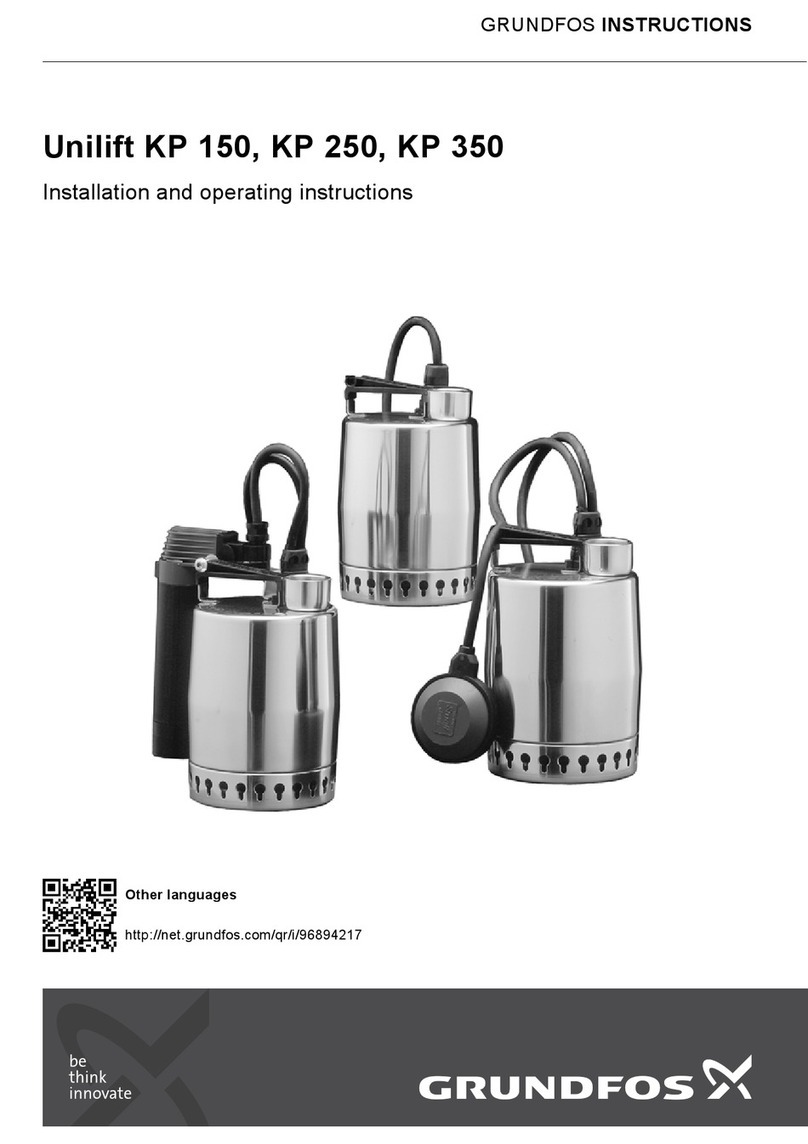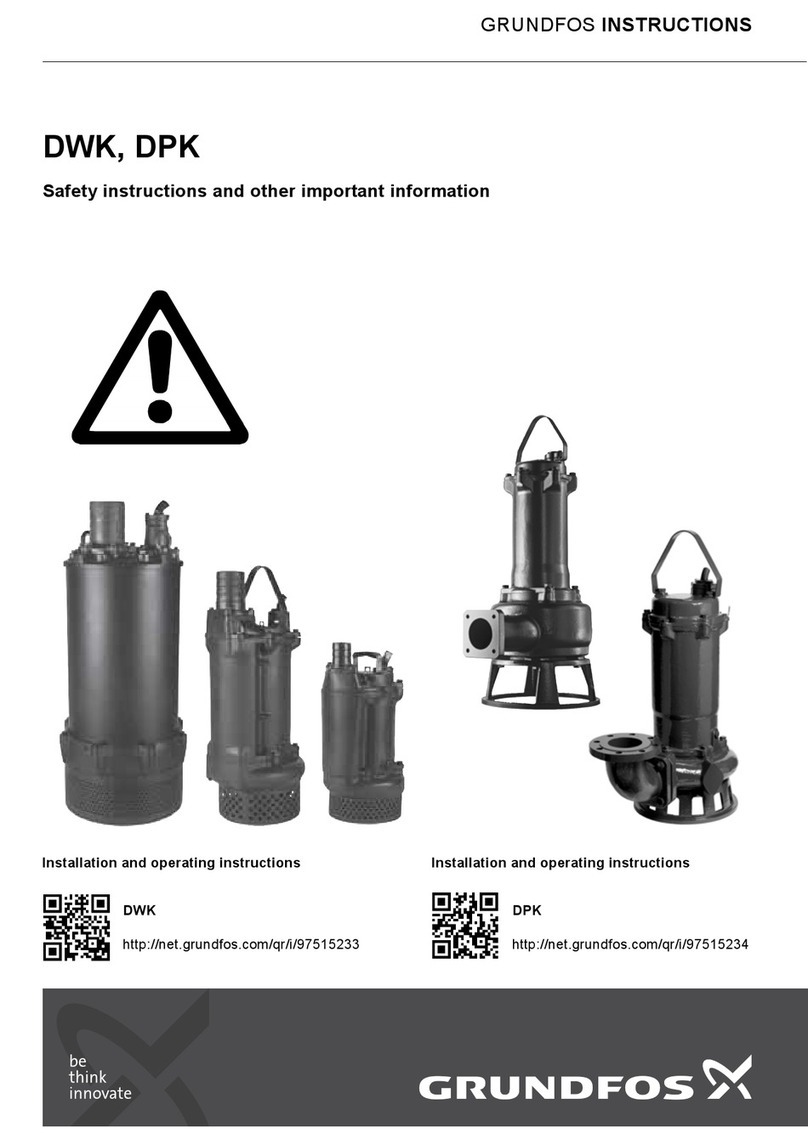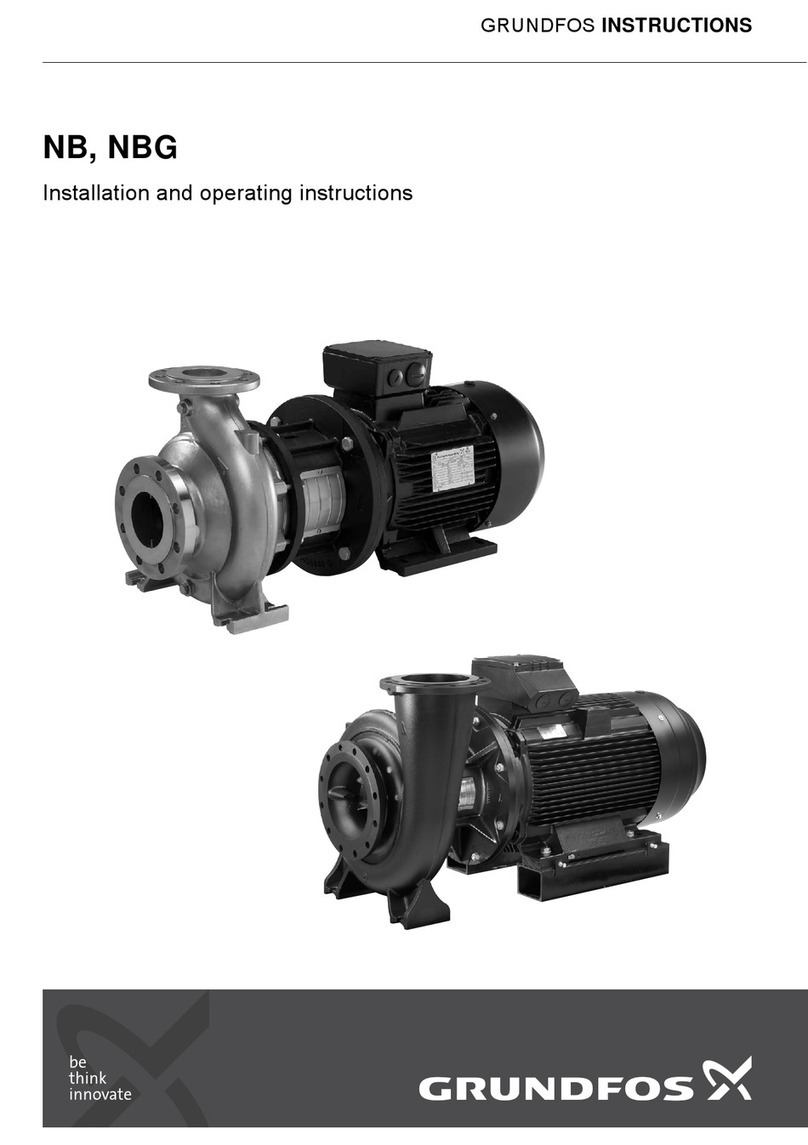
6
6.8 Bypass
Note: The pump is not allowed to run against a closed discharge
valve as this will cause an increase in temperature/formation of
steam in the pump which may cause damage to the pump.
If there is any danger of the pump running against a closed dis-
charge valve, a minimum liquid flow through the pump should be
ensured by connecting a bypass to the discharge pipe. The
bypass line should feed back to the suction source.
A minimum flow rate equal to 10% of the flow rate at maximum
efficiency is needed at all times. Flow rate and head at maximum
efficiency are stated on the pump nameplate.
7. Electrical connection
7.1 Motor
The SR, SF pumps are supplied with heavy-duty, 2-pole
3450 rpm TEFC NEMA C-face motors selected to our rigid speci-
fications. Motors have been selected to operate without exceed-
ing their service factor ratings. Motors with other enclosure types
and for other voltages and frequencies are available on a special
order basis. Motors are commercially available NEMA frame.
Replace motors according to the motor nameplate data or contact
Grundfos to locate a motor supplier.
7.2 Supply power
1 x115/208-230 V ±10%
3 x 208-230/460 V ±10% or 3 x 575 V ±10%.
Check the electrical supply to make sure that the voltage, phase,
and frequency match that of the pump motor. The proper operat-
ing voltage, other electrical information and wiring diagrams can
be found on the motor nameplate.
Note: If voltage variations are larger than ±10%, do not operate
the pump.
7.3 Field wiring
Wire sizes should be based on the current carrying properties of
a conductor as recommended by the latest edition of the NEC,
local codes and regulations. Direct-on-line (DOL) starting is
approved due to the extremely fast run-up time of the motor and
the low moment of inertia of the pump and motor. If DOL starting
is not acceptable and reduced starting current is required, an
auto-transformer, resistant starter, or soft start should be used.
We recommend that a fused disconnect is used for each pump
where service and standby pumps are installed.
7.4 Motor protection
Single-phase motors
Single-phase SR, SF pumps are equipped with multi-voltage,
squirrel cage induction motors with built-in thermal protection.
Three-phase motors
SR, SF pumps with three-phase motors must be used with the
proper size and type of motor starter to ensure that the motor is
protected against damage from low voltage, phase failure, current
imbalance, and overloads. A properly sized starter with manual
reset and ambient-compensated extra-quick trip in all three legs
should be used.
The overload should be sized and adjusted to the current rating of
the motor.
Note: Under no circumstances should the overloads be set to a
higher value than the service factor current shown on the motor
nameplate. This will void the warranty.
Overloads for auto-transformers and resistant starters should be
sized in accordance with the recommendations of the manufac-
turer.
7.5 Pump start-up
Note: Do not start the pump before priming and venting the
pump. Never operate the pump dry.
7.5.1 Priming
The suction pipe and the pump must be filled with liquid before
the pump is started.
Closed system
1. Remove the topmost drain/vent plug.
2. Gradually open the isolation valve in the suction line until a
steady stream of airless water runs out of the open plug.
3. Replace the plug and securely tighten.
4. Completely open the isolation valves.
Open system
Filling with liquid is best accomplished through the discharge port
or an opening in the discharge piping at a level above the pump
volute.
1. Remove the topmost drain/vent plug.
2. Pour water into the discharge until the suction piping and
pump are completely filled.
If the suction piping does not slope downward from the pump
towards the water level, the air in the line must be purged
while the system is being filled.
3. Replace the drain/vent plug and securely tighten.
4. Connect and/or seal the discharge piping.
7.6 Check motor rotation
1. Make sure power is off.
2. Make sure that the pump has been filled and vented.
3. Rotate the pump shaft to be certain it turns freely.
4. Verify that the electrical connections are in accordance with
the wiring diagram on the motor.
5. Briefly switch the power on and observe the direction of rota-
tion. When viewed from the motor end, the pump should rotate
clockwise.
6. To reverse the direction of rotation, first switch off the supply
power.
7. On the three-phase motors, interchange any two power leads
on the load side of the starter. On single-phase motors, see
the connection diagram on the motor and change the wiring as
required.
8. Repeat step 3 to ensure that improper rotation has not
unthreaded the impeller from the pump shaft.
9. Switch on the power and again check the motor for proper
rotation.
All electrical work should be performed by a qualified
electrician in accordance with the latest edition of the
US National Electrical Code (NEC), local codes and
regulations.
The safe operation of this pump requires that it is
grounded in accordance with the NEC and local gov-
erning codes or regulations. Connectthe ground wire
to the grounding screw in the terminal box and then
to the acceptable grounding point.
